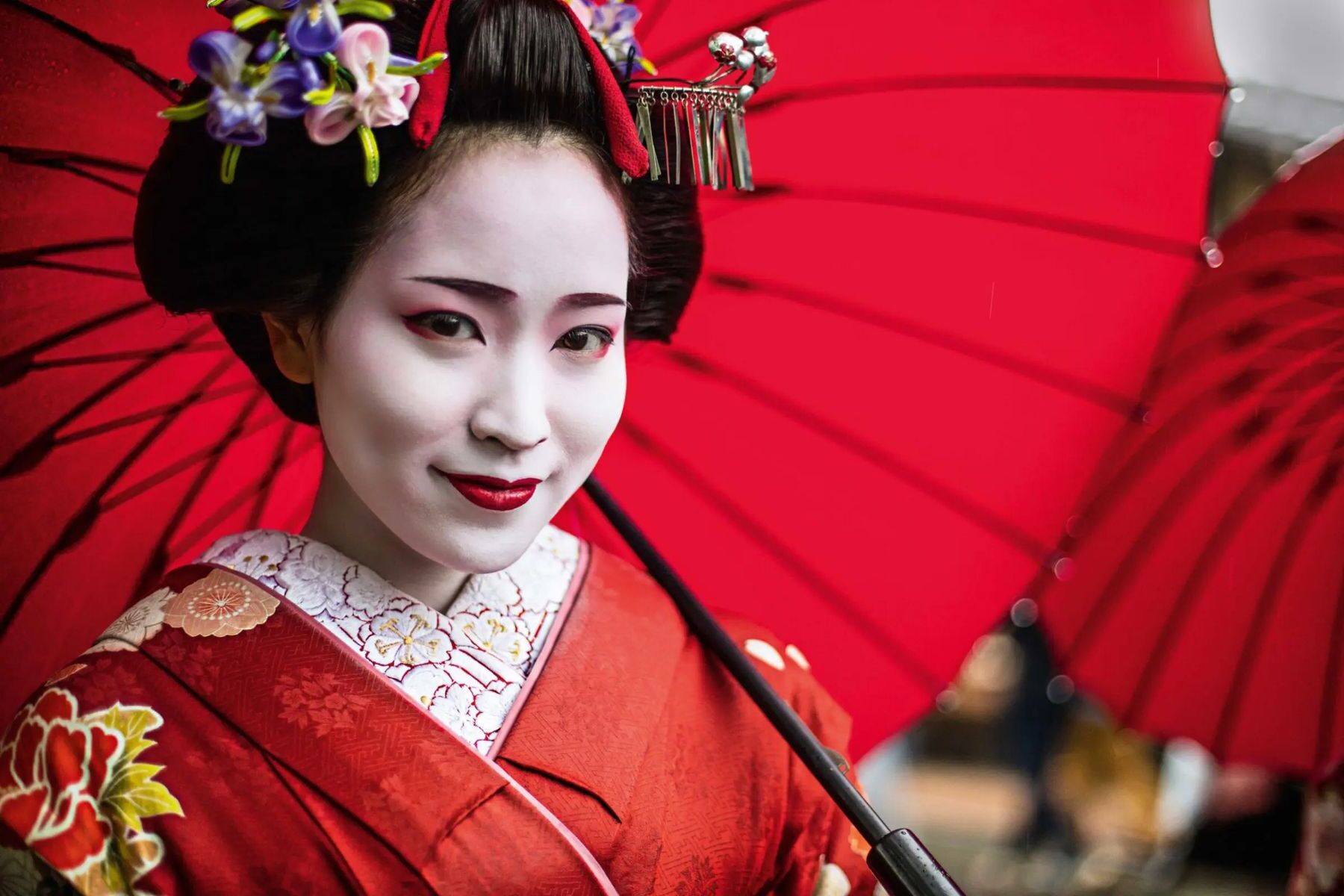
Geisha history is a tapestry of tradition, artistry, and mystery. These iconic figures, known for their elaborate kimonos and white makeup, have fascinated people for centuries. But what exactly is a geisha? Geishas are traditional Japanese female entertainers skilled in performing classical music, dance, and games. Originating in the 18th century, they played a crucial role in Japanese culture, offering refined entertainment to the elite. Their world is governed by strict rules, rigorous training, and a deep respect for customs. From their intricate hairstyles to their graceful movements, every aspect of a geisha's life is steeped in meaning. Ready to dive into 40 intriguing facts about these enigmatic artists? Let's uncover the secrets behind the mesmerizing world of geishas!
Key Takeaways:
- Geisha, the iconic symbols of Japanese culture, originated in the 18th century and continue to captivate audiences with their artistic performances and distinctive appearance. Despite misconceptions, they are skilled professionals who have left a lasting impact on popular culture worldwide.
- The training and apprenticeship of geisha involve rigorous years of learning and refinement, shaping them into talented entertainers. Their rich history includes famous individuals who have made significant contributions to culture, inspiring novels and films that have brought their story to a global audience.
Origins of Geisha
Geisha, the iconic symbols of Japanese culture, have a rich history that spans centuries. Let's dive into some fascinating facts about their origins.
- The word "geisha" translates to "person of the arts" in Japanese.
- Geisha culture began in the 18th century during the Edo period.
- Initially, geisha were men known as "taikomochi" or "hokan."
- Female geisha emerged around the 1750s, gradually outnumbering their male counterparts.
- The first female geisha were actually courtesans who entertained with music and dance.
Training and Apprenticeship
Becoming a geisha requires years of rigorous training. Here are some intriguing details about their apprenticeship.
- Young girls start their training as "shikomi" at the age of 15 or younger.
- Shikomi perform household chores and observe senior geisha to learn the trade.
- After passing a series of tests, they become "minarai," or learning by observation.
- Minarai wear more elaborate kimonos and start attending banquets to gain experience.
- The final stage is becoming a "maiko," an apprentice geisha, where they refine their skills in dance, music, and conversation.
The Art of Performance
Geisha are renowned for their artistic talents. Let's explore some facts about their performances.
- Geisha perform traditional Japanese dances known as "odori."
- They play musical instruments like the shamisen, a three-stringed lute.
- Singing is another essential skill, often performed in a style called "nagauta."
- Geisha also engage in "ozashiki asobi," traditional parlor games with guests.
- Their performances are often held in "ochaya," or tea houses, where they entertain clients.
The Iconic Geisha Appearance
The appearance of a geisha is both striking and symbolic. Here are some facts about their distinctive look.
- Geisha wear elaborate silk kimonos, often with intricate patterns and designs.
- Their hairstyles, known as "nihongami," are styled with wax and adorned with hairpins.
- Maiko wear more colorful and elaborate kimonos compared to fully-fledged geisha.
- The white face makeup, called "oshiroi," is applied to create a porcelain-like appearance.
- Red and black accents on the eyes and lips are used to enhance their features.
Geisha in Modern Times
While the number of geisha has declined, they still hold a significant place in Japanese culture today.
- Kyoto remains the cultural heart of geisha traditions.
- Modern geisha continue to train in traditional arts and entertain at exclusive events.
- The number of geisha in Japan is estimated to be around 1,000.
- Some geisha have adapted to contemporary times by incorporating modern elements into their performances.
- Geisha can now be seen participating in cultural festivals and public events.
Misconceptions and Myths
There are many misconceptions about geisha. Let's clear up some common myths.
- Geisha are not prostitutes; their role is to entertain through art and conversation.
- The term "geisha girl" used by Westerners during World War II referred to prostitutes, not actual geisha.
- Geisha do not sell their virginity; this practice, known as "mizuage," was abolished in the 1950s.
- Geisha are not submissive; they are skilled professionals with a high degree of autonomy.
- The life of a geisha is not one of luxury; it involves hard work and dedication.
Famous Geisha
Throughout history, some geisha have become famous for their talents and contributions to culture.
- Mineko Iwasaki, one of the most famous geisha, inspired the novel "Memoirs of a Geisha."
- Kiharu Nakamura was a geisha who became an author and cultural ambassador.
- Ichimaru was a geisha who transitioned into a successful singing career.
- Sada Yacco was a geisha who became an international stage actress.
- Komomo, a modern geisha, has been featured in documentaries and books.
Geisha and Popular Culture
Geisha have left a lasting impact on popular culture worldwide. Here are some examples.
- The novel "Memoirs of a Geisha" by Arthur Golden brought geisha culture to a global audience.
- The 2005 film adaptation of "Memoirs of a Geisha" further popularized their story.
- Geisha have been depicted in various forms of media, including anime and manga.
- Fashion designers often draw inspiration from geisha attire for their collections.
- Geisha continue to be a symbol of grace, beauty, and cultural heritage in Japan and beyond.
The Legacy of Geisha
Geisha have left a lasting mark on Japanese culture. Their dedication to art, music, and dance showcases a unique blend of tradition and elegance. These women, often misunderstood, represent a world of discipline and grace. They aren't just entertainers; they're cultural ambassadors preserving centuries-old practices.
Understanding the history of geisha helps appreciate their role in society. From their elaborate kimonos to their intricate performances, every aspect of their life is steeped in heritage. The world of geisha is a testament to the beauty of Japanese traditions.
Next time you see a geisha, remember the rich history and dedication behind that serene face. Their story is a fascinating chapter in the book of Japan's cultural history.
Frequently Asked Questions
Was this page helpful?
Our commitment to delivering trustworthy and engaging content is at the heart of what we do. Each fact on our site is contributed by real users like you, bringing a wealth of diverse insights and information. To ensure the highest standards of accuracy and reliability, our dedicated editors meticulously review each submission. This process guarantees that the facts we share are not only fascinating but also credible. Trust in our commitment to quality and authenticity as you explore and learn with us.


